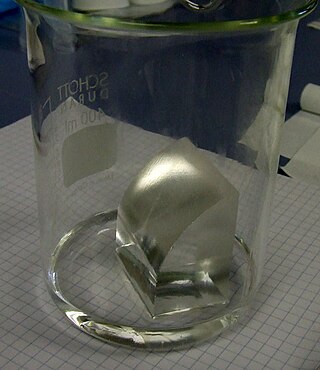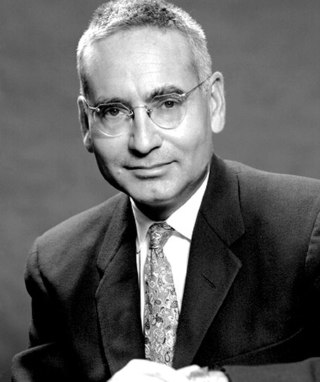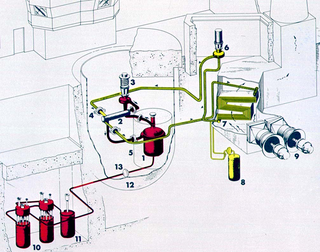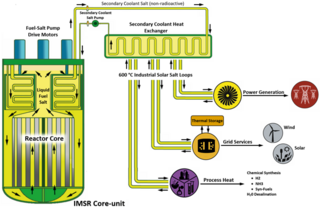
A nuclear reactor is a device used to initiate and control a fission nuclear chain reaction or nuclear fusion reactions. Nuclear reactors are used at nuclear power plants for electricity generation and in nuclear marine propulsion. Heat from nuclear fission is passed to a working fluid, which in turn runs through steam turbines. These either drive a ship's propellers or turn electrical generators' shafts. Nuclear generated steam in principle can be used for industrial process heat or for district heating. Some reactors are used to produce isotopes for medical and industrial use, or for production of weapons-grade plutonium. As of 2022, the International Atomic Energy Agency reports there are 422 nuclear power reactors and 223 nuclear research reactors in operation around the world.

Nuclear reprocessing is the chemical separation of fission products and actinides from spent nuclear fuel. Originally, reprocessing was used solely to extract plutonium for producing nuclear weapons. With commercialization of nuclear power, the reprocessed plutonium was recycled back into MOX nuclear fuel for thermal reactors. The reprocessed uranium, also known as the spent fuel material, can in principle also be re-used as fuel, but that is only economical when uranium supply is low and prices are high. A breeder reactor is not restricted to using recycled plutonium and uranium. It can employ all the actinides, closing the nuclear fuel cycle and potentially multiplying the energy extracted from natural uranium by about 60 times.

A breeder reactor is a nuclear reactor that generates more fissile material than it consumes. Breeder reactors achieve this because their neutron economy is high enough to create more fissile fuel than they use, by irradiation of a fertile material, such as uranium-238 or thorium-232, that is loaded into the reactor along with fissile fuel. Breeders were at first found attractive because they made more complete use of uranium fuel than light water reactors, but interest declined after the 1960s as more uranium reserves were found, and new methods of uranium enrichment reduced fuel costs.

A molten salt reactor (MSR) is a class of nuclear fission reactor in which the primary nuclear reactor coolant and/or the fuel is a molten salt mixture. Only two MSRs have ever operated, both research reactors in the United States. The 1950's Aircraft Reactor Experiment was primarily motivated by the compact size that the technique offers, while the 1960's Molten-Salt Reactor Experiment aimed to prove the concept of a nuclear power plant which implements a thorium fuel cycle in a breeder reactor. Increased research into Generation IV reactor designs began to renew interest in the technology, with multiple nations having projects, and as of September 2021, China is on the verge of starting its TMSR-LF1 thorium MSR.

Nuclear fuel is material used in nuclear power stations to produce heat to power turbines. Heat is created when nuclear fuel undergoes nuclear fission.

The Aircraft Reactor Experiment (ARE) was an experimental nuclear reactor designed to test the feasibility of fluid-fuel, high-temperature, high-power-density reactors for the propulsion of supersonic aircraft. It operated between November 8-12, 1954 at the Oak Ridge National Laboratory (ORNL) with a maximum sustained power of 2.5 megawatts (MW), and generated a total of 96 MW-hours of energy.

Lithium fluoride is an inorganic compound with the chemical formula LiF. It is a colorless solid, that transitions to white with decreasing crystal size. Although odorless, lithium fluoride has a bitter-saline taste. Its structure is analogous to that of sodium chloride, but it is much less soluble in water. It is mainly used as a component of molten salts. Formation of LiF from the elements releases one of the highest energy per mass of reactants, second only to that of BeO.
Generation IV reactors are six nuclear reactor designs recognized by the Generation IV International Forum. The designs target improved safety, sustainability, efficiency, and cost.

The thorium fuel cycle is a nuclear fuel cycle that uses an isotope of thorium, 232
Th
, as the fertile material. In the reactor, 232
Th
is transmuted into the fissile artificial uranium isotope 233
U
which is the nuclear fuel. Unlike natural uranium, natural thorium contains only trace amounts of fissile material, which are insufficient to initiate a nuclear chain reaction. Additional fissile material or another neutron source is necessary to initiate the fuel cycle. In a thorium-fuelled reactor, 232
Th
absorbs neutrons to produce 233
U
. This parallels the process in uranium breeder reactors whereby fertile 238
U
absorbs neutrons to form fissile 239
Pu
. Depending on the design of the reactor and fuel cycle, the generated 233
U
either fissions in situ or is chemically separated from the used nuclear fuel and formed into new nuclear fuel.

Zirconium(IV) fluoride (ZrF4) is an inorganic chemical compound. It is a component of ZBLAN fluoride glass. It is insoluble in water. It is the main component of fluorozirconate glasses.

Alvin Martin Weinberg was an American nuclear physicist who was the administrator at Oak Ridge National Laboratory (ORNL) during and after the Manhattan Project. He came to Oak Ridge, Tennessee, in 1945 and remained there until his death in 2006. He was the first to use the term "Faustian bargain" to describe nuclear energy.

The Molten-Salt Reactor Experiment (MSRE) was an experimental molten salt reactor research reactor at the Oak Ridge National Laboratory (ORNL). This technology was researched through the 1960s, the reactor was constructed by 1964, it went critical in 1965, and was operated until 1969. The costs of a cleanup project were estimated at about $130 million.

The liquid fluoride thorium reactor is a type of molten salt reactor. LFTRs use the thorium fuel cycle with a fluoride-based molten (liquid) salt for fuel. In a typical design, the liquid is pumped between a critical core and an external heat exchanger where the heat is transferred to a nonradioactive secondary salt. The secondary salt then transfers its heat to a steam turbine or closed-cycle gas turbine.
Hybrid nuclear fusion–fission is a proposed means of generating power by use of a combination of nuclear fusion and fission processes.
The FUJI molten salt reactor is a proposed molten-salt-fueled thorium fuel cycle thermal breeder reactor, using technology similar to the Oak Ridge National Laboratory's Molten Salt Reactor Experiment – liquid fluoride thorium reactor. It was being developed by the Japanese company International Thorium Energy & Molten-Salt Technology (IThEMS), together with partners from the Czech Republic. As a breeder reactor, it converts thorium into the nuclear fuel uranium-233. To achieve reasonable neutron economy, the chosen single-salt design results in significantly larger feasible size than a two-salt reactor. Like all molten salt reactors, its core is chemically inert and under low pressure, helping to prevent explosions and toxic releases. The proposed design is rated at 200 MWe output. The IThEMS consortium planned to first build a much smaller MiniFUJI 10 MWe reactor of the same design once it had secured an additional $300 million in funding.

FLiBe is a molten salt made from a mixture of lithium fluoride (LiF) and beryllium fluoride (BeF2). It is both a nuclear reactor coolant and solvent for fertile or fissile material. It served both purposes in the Molten-Salt Reactor Experiment (MSRE) at the Oak Ridge National Laboratory.

Thorium-based nuclear power generation is fueled primarily by the nuclear fission of the isotope uranium-233 produced from the fertile element thorium. A thorium fuel cycle can offer several potential advantages over a uranium fuel cycle—including the much greater abundance of thorium found on Earth, superior physical and nuclear fuel properties, and reduced nuclear waste production. One advantage of thorium fuel is its low weaponization potential; it is difficult to weaponize the uranium-233/232 and plutonium-238 isotopes that are largely consumed in thorium reactors.

The Integral Molten Salt Reactor (IMSR) is a nuclear power plant design targeted at developing a commercial product for the small modular reactor (SMR) market. It employs molten salt reactor technology which is being developed by the Canadian company Terrestrial Energy. It is based closely on the denatured molten salt reactor (DMSR), a reactor design from Oak Ridge National Laboratory. It also incorporates elements found in the SmAHTR, a later design from the same laboratory. The IMSR belongs to the DMSR class of molten salt reactors (MSR) and hence is a "burner" reactor that employs a liquid fuel rather than a conventional solid fuel; this liquid contains the nuclear fuel and also serves as primary coolant.

The Stable Salt Reactor (SSR) is a nuclear reactor design under development by Moltex Energy Canada Inc. and its subsidiary Moltex Energy USA LLC, based in Canada, the United States, and the United Kingdom, as well as MoltexFLEX Ltd., based in the United Kingdom.













